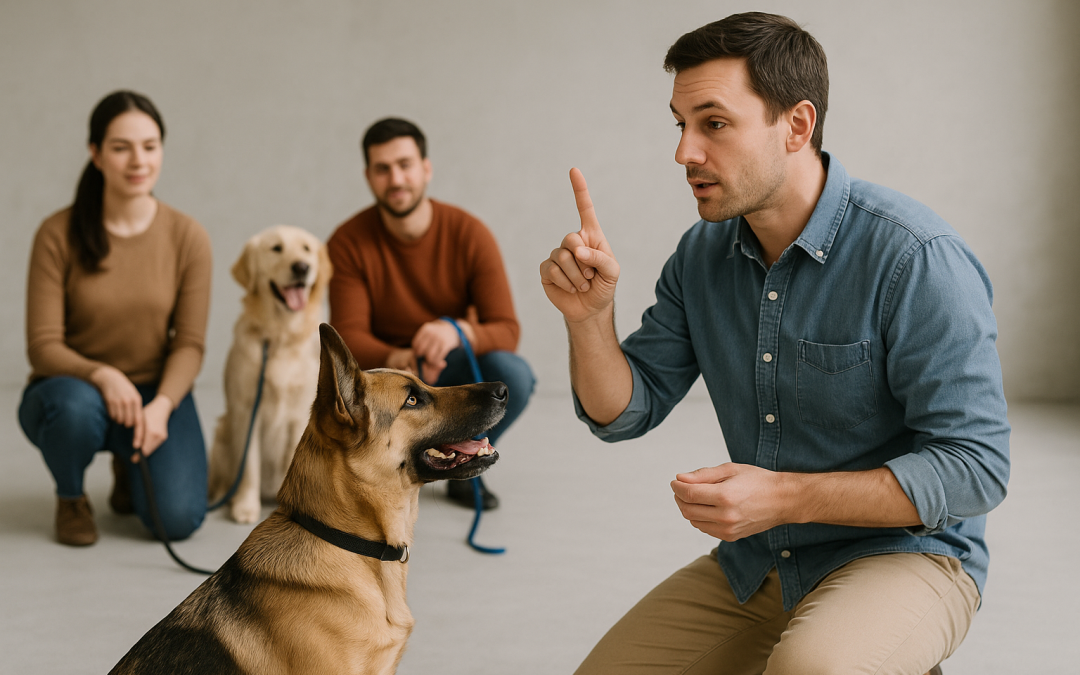Top 5 Reasons to Invest in Dog Training Classes for Your Furry Friend
Owning a dog is a rewarding experience, but it comes with challenges. From basic obedience to addressing behavioral issues, dog training classes are an investment that can transform your relationship with your furry friend. These classes offer invaluable benefits, including improved behavior, stronger bonds, and better socialization for both owner and pet.
1. Improved Behavior and Obedience
Why It Matters:
A well-behaved dog is a joy to live with. Dog training classes equip your dog with the skills to follow commands, behave in public, and avoid destructive habits.
Key Benefits:
- Basic Commands: Teaching your dog commands like sit, stay, and come can prevent dangerous situations, such as running into traffic.
- Household Harmony: Address issues like excessive barking, jumping on guests, or chewing on furniture.
- Consistent Rules: Classes help establish a clear set of rules your dog can follow, reducing confusion and misbehavior.
Example:
Imagine coming home to find your dog calmly waiting instead of jumping on you or chewing your favorite shoes. This kind of behavior isn’t luck—it’s the result of consistent training.
How Classes Help:
Professional trainers use proven techniques to guide you and your dog through structured lessons. They can also tailor solutions to your dog’s specific needs, ensuring effective learning.
2. Stronger Bond Between Owner and Dog
Why It Matters:
Training classes foster a deeper understanding and connection between you and your dog. Dogs thrive on structure, communication, and positive reinforcement, all of which strengthen the human-canine bond.
Key Benefits:
- Mutual Respect: Training builds a relationship based on trust and cooperation.
- Shared Activities: Working on commands and practicing skills together becomes quality time that enriches your bond.
- Empowerment: Owners gain confidence in handling their dog, and dogs feel secure knowing their place in the pack.
Example:
Dogs crave a sense of purpose. Engaging in training fulfills their mental needs while also showing them that they can rely on you for guidance and support.
How Classes Help:
Under the guidance of an experienced trainer, you’ll learn how to read your dog’s body language, understand their needs, and communicate effectively. This fosters a relationship built on mutual understanding and respect.
3. Enhanced Socialization for Dogs and Owners
Why It Matters:
Dogs are social animals that benefit from interacting with other dogs and humans. Training classes provide a safe environment for these interactions, reducing fear, aggression, or anxiety.
Key Benefits:
- Proper Dog-Dog Interactions: Dogs learn how to play and interact appropriately with other dogs.
- Decreased Reactivity: Exposure to different environments and stimuli helps desensitize your dog to triggers like loud noises, bicycles, or strangers.
- Owner Support: Training classes bring together a community of dog owners, offering camaraderie and shared experiences.
Example:
A dog that hasn’t been socialized may bark uncontrollably at other dogs or pull aggressively on the leash. Training classes can help your dog learn to stay calm and confident in social settings.
How Classes Help:
In group settings, trainers facilitate controlled interactions, ensuring every dog is safe while practicing appropriate social behaviors. This structure is invaluable for nervous or overly excitable dogs.
4. Mental Stimulation and Physical Exercise
Why It Matters:
Dogs, like humans, need both mental and physical activity to thrive. Training classes challenge your dog’s brain while often incorporating physical activity, leading to a happier and more balanced pet.
Key Benefits:
- Problem-Solving Skills: Learning commands and new behaviors keeps your dog mentally sharp.
- Burning Off Energy: A focused training session can tire out even the most energetic dog, reducing hyperactive behavior at home.
- Preventing Boredom: Mental engagement helps stave off boredom-related problems like digging or chewing.
Example:
A bored dog might dig holes in your garden or bark incessantly, but a well-trained dog is more likely to channel their energy positively.
How Classes Help:
Through activities like agility training, obedience drills, or scent work, your dog gets both a workout and a mental challenge. Trainers ensure that exercises are suited to your dog’s age, breed, and energy level.
5. Lifelong Benefits and Safety
Why It Matters:
Training classes lay the groundwork for a safer and more fulfilling life for your dog. They teach critical skills that can prevent accidents and enhance your dog’s overall well-being.
Key Benefits:
- Reliable Recall: Ensuring your dog comes when called can prevent dangerous situations, like running into traffic.
- Behavior in Emergencies: Trained dogs are more likely to remain calm and follow instructions in stressful scenarios.
- Long-Term Well-Being: Training instills lifelong habits that improve your dog’s quality of life.
Example:
Imagine taking your dog off-leash in a park and knowing they’ll come back when called, even if they see a squirrel. This level of trust and control makes life more enjoyable for both of you.
How Classes Help:
Professional trainers teach practical skills and prepare dogs for real-world situations. Many classes also offer advanced training for those looking to further enhance their dog’s abilities.
Additional Benefits of Dog Training Classes
While the top five reasons focus on key advantages, there are additional benefits to consider:
- Reduced Stress for Owners: Knowing your dog is well-behaved can ease the anxiety of outings or visitors.
- Adaptability: Dogs trained in obedience and socialization adapt better to new environments, whether it’s moving to a new home or meeting new family members.
- Stronger Community Bonds: Well-behaved dogs are welcomed in public spaces, increasing opportunities for outdoor adventures and social gatherings.
Choosing the Right Training Class
When selecting a dog training class, consider the following:
- Trainer Credentials: Look for certified professionals with positive reviews and experience in your dog’s specific needs.
- Class Size: Smaller classes allow for more individualized attention.
- Methodology: Choose programs that prioritize positive reinforcement over punitive measures.
- Customization: Some classes cater to specific goals, like agility training, behavioral correction, or puppy socialization.
Final Thoughts
Investing in dog training classes is one of the best decisions you can make for your furry friend. Beyond improving behavior, these classes foster a deeper bond, enhance socialization, and provide mental stimulation that enriches your dog’s life. The skills learned in training not only make your life easier but also ensure a happier, healthier, and safer life for your dog.
Training isn’t just about teaching commands—it’s about building a partnership. So, if you’ve been on the fence about signing up, take the leap. Your furry friend will thank you with wagging tails and years of loyal companionship.

